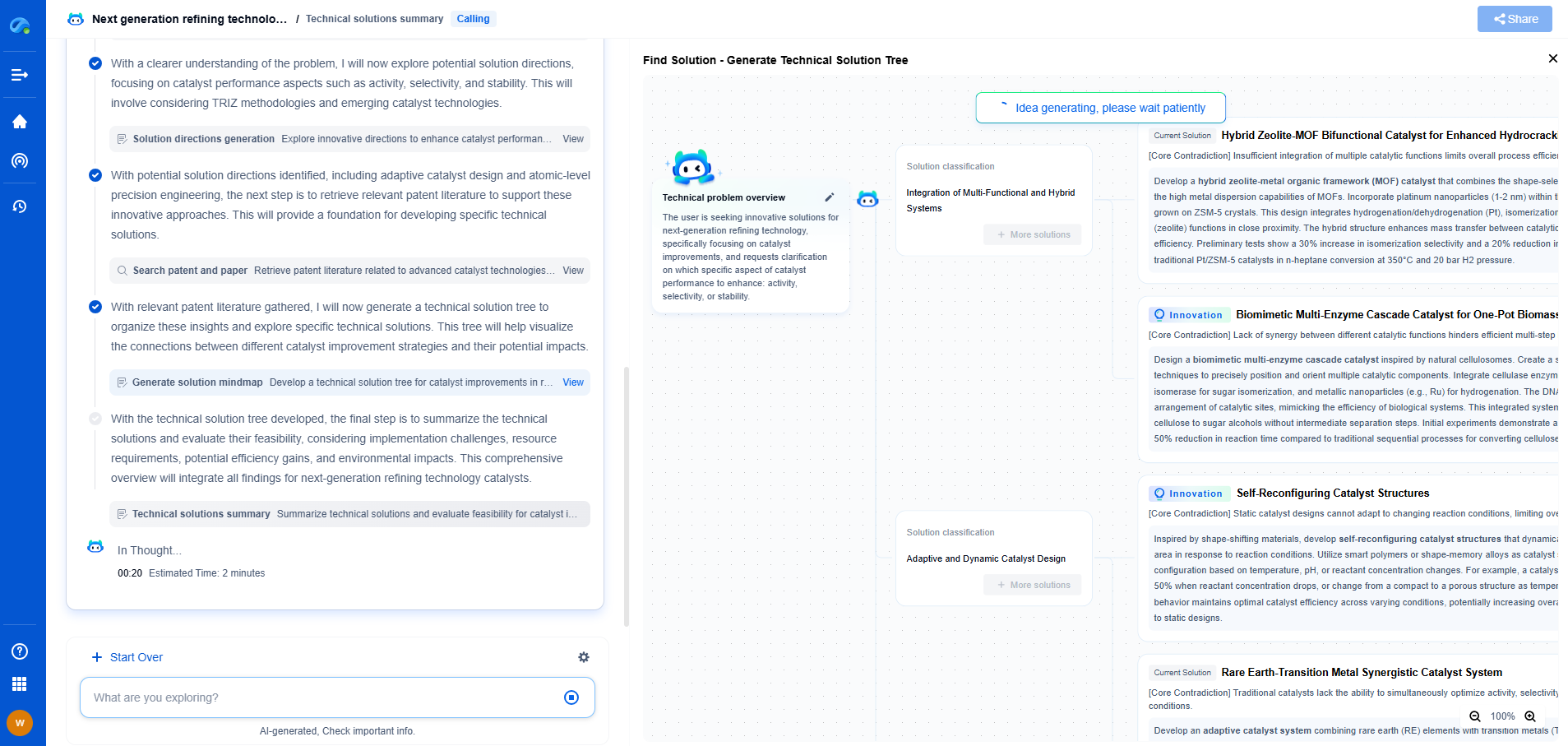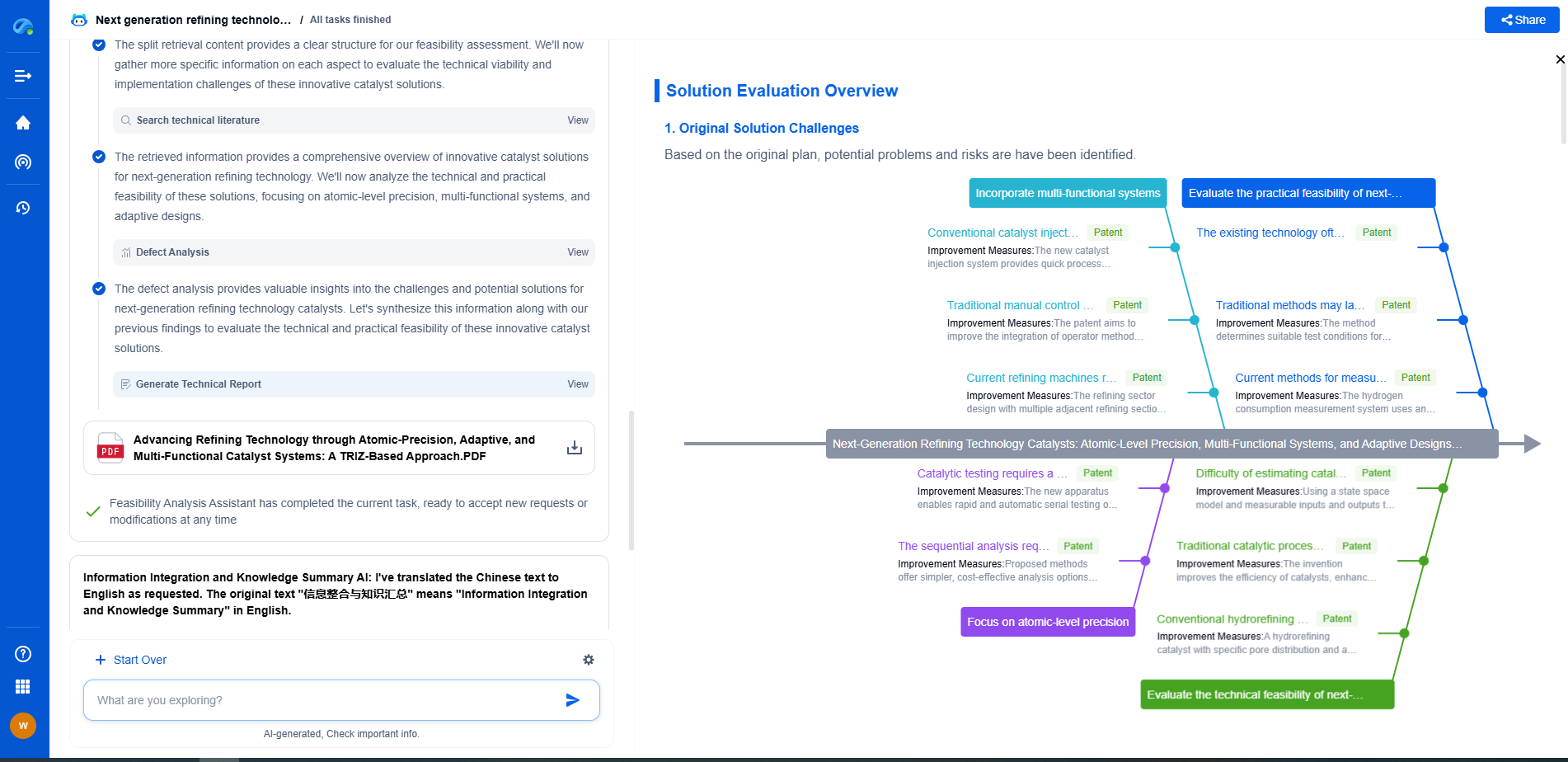Steel vs Plastic Gear Housings: Pros and Cons
JUL 2, 2025 |
In the world of machinery and engineering, the choice of materials can significantly impact the performance, durability, and cost-effectiveness of a product. One such decision is choosing between steel and plastic for gear housings. Both materials have their unique advantages and disadvantages, which can influence the decision-making process depending on the specific requirements of the application. In this blog, we'll explore the pros and cons of steel and plastic gear housings, helping you make an informed decision.
Durability and Strength
Steel Gear Housings: Pros and Cons
Steel is renowned for its exceptional strength and durability. Gear housings made from steel can withstand substantial mechanical stress and are highly resistant to wear and tear over time. This makes them ideal for heavy-duty applications where high torque and pressure are involved. Steel's robustness also provides excellent protection against impact and abrasion, ensuring a longer lifespan for the gear housing.
However, the durability of steel comes with a downside: weight. Steel gear housings are significantly heavier than their plastic counterparts, potentially affecting the overall weight and balance of machinery. Additionally, the production and maintenance of steel housings can be more costly due to the material and the processes involved.
Plastic Gear Housings: Pros and Cons
Plastic gear housings, on the other hand, tend to be lighter and more cost-effective than steel. They offer substantial resistance to corrosion, which can be a significant advantage in environments exposed to moisture and chemicals. This attribute can enhance the longevity of plastic housings in specific applications, particularly those involving exposure to harsh conditions.
However, plastic does not offer the same level of strength and durability as steel. It may be prone to deformation under high stress or temperature conditions, which can limit its use in heavy-duty applications. Additionally, plastic gear housings may not offer the same level of impact resistance as steel, potentially affecting their durability in certain environments.
Cost Considerations
Steel Gear Housings
The cost of steel gear housings can be a double-edged sword. While steel provides exceptional durability, it also tends to be more expensive both in terms of material costs and manufacturing processes. This can make steel gear housings less attractive for budget-conscious projects or applications where the added strength of steel is unnecessary. However, for applications where long-term durability is critical, the investment in steel may prove cost-effective over time.
Plastic Gear Housings
Plastic gear housings generally offer a more cost-effective solution. The materials themselves are often less expensive than steel, and the manufacturing processes can be simpler and less costly. This makes plastic an attractive option for applications where budget is a concern or where the added strength and durability of steel are not required. However, the potential for increased wear and deformation may lead to more frequent replacements, which could offset some of the initial cost savings.
Environmental and Maintenance Factors
Environmental Impact
When considering the environmental impact, both steel and plastic have their challenges. Steel production is energy-intensive and contributes to greenhouse gas emissions. However, steel is highly recyclable, which can mitigate some of its environmental impact if properly managed.
Plastic, while often cheaper and lighter, presents challenges in terms of environmental sustainability. It is less commonly recycled and can contribute to pollution if not disposed of properly. The choice between steel and plastic from an environmental perspective involves balancing these factors based on the specific application and lifecycle management practices.
Maintenance Requirements
In terms of maintenance, steel gear housings may require more frequent care to prevent corrosion, especially in environments prone to moisture. However, their inherent strength typically means less frequent repairs or replacements.
Plastic gear housings generally require less maintenance in terms of corrosion resistance, but they may need more frequent inspections for wear and deformation, especially in demanding applications.
Conclusion
Choosing between steel and plastic gear housings involves weighing the pros and cons of each material in relation to the specific requirements of your application. Steel offers unmatched strength and durability, making it suitable for heavy-duty applications, albeit at a higher cost and weight. Plastic, with its lighter weight and lower cost, can be ideal for applications where budget and corrosion resistance are priorities but may fall short in terms of strength and temperature resilience.
Ultimately, the decision should be guided by a thorough understanding of the operational environment, mechanical demands, and budgetary constraints, ensuring the chosen material aligns with the long-term goals of your project.
Boost Innovation in Gears & Transmissions with Patsnap Eureka
Whether you're designing a next-gen planetary gearbox or optimizing gear tooth profiles for noise reduction, keeping up with the fast-evolving landscape of mechanical transmissions requires more than just experience—it takes insight, speed, and smart tools.
Patsnap Eureka, our intelligent AI assistant built for R&D professionals in high-tech sectors, empowers you with real-time expert-level analysis, technology roadmap exploration, and strategic mapping of core patents—all within a seamless, user-friendly interface.
Whether you're streamlining a manual transmission system or exploring electromechanical actuation, Patsnap Eureka helps your team move from concept to novelty faster than ever.
👉 Experience Eureka in action—request a personalized demo today and see how AI can revolutionize your gear innovation workflows.
- R&D
- Intellectual Property
- Life Sciences
- Materials
- Tech Scout
- Unparalleled Data Quality
- Higher Quality Content
- 60% Fewer Hallucinations
Browse by: Latest US Patents, China's latest patents, Technical Efficacy Thesaurus, Application Domain, Technology Topic, Popular Technical Reports.
© 2025 PatSnap. All rights reserved.Legal|Privacy policy|Modern Slavery Act Transparency Statement|Sitemap|About US| Contact US: help@patsnap.com

